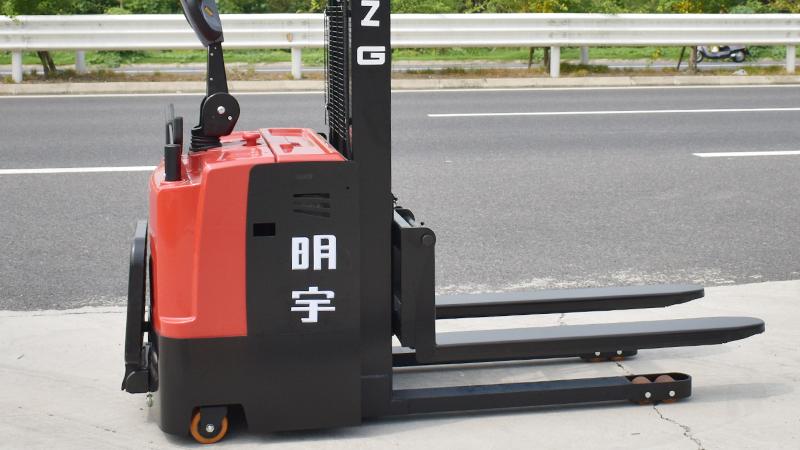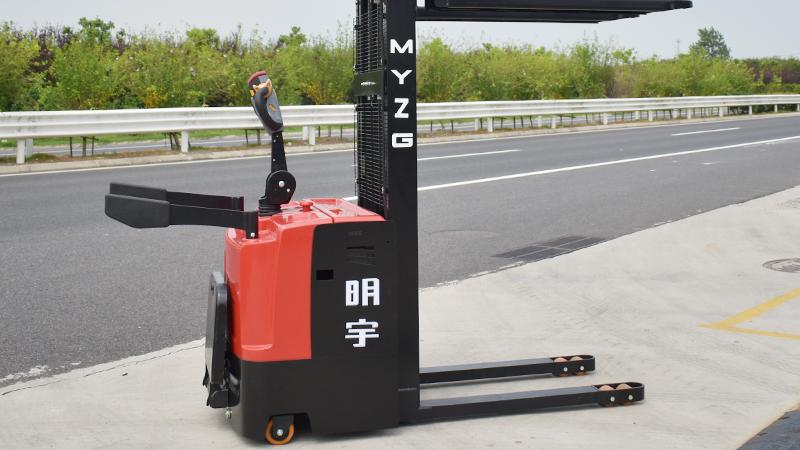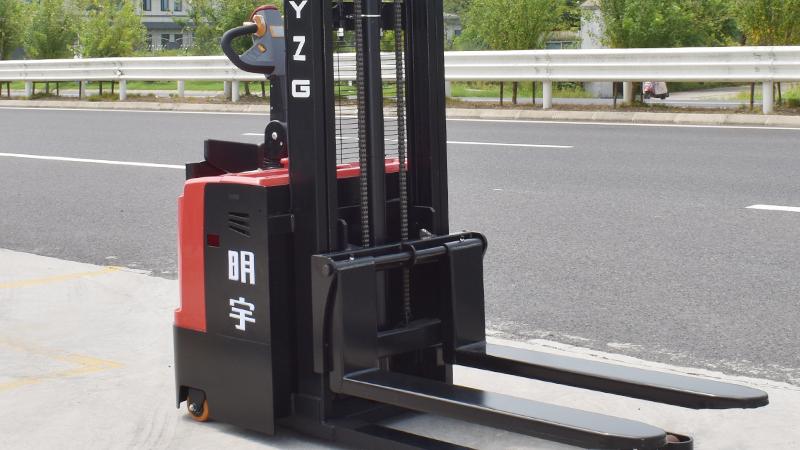Operating a walkie stacker, a pedestrian-controlled pallet truck ubiquitous in warehouse and logistics environments, demands a rigorous and unwavering commitment to a comprehensive set of safety protocols that extend far beyond simply pushing a button and moving a load. The foundational pillar of this safety framework is the pre-operation inspection, a meticulous and non-negotiable daily routine that every certified operator must perform before the equipment is ever energized. This inspection is a systematic process that involves checking the physical and functional integrity of the entire machine, starting with a visual examination of the forks for any signs of cracks, distortion, or wear, ensuring the load backrest is secure, and verifying that the hydraulic systems are free from leaks and that the lift chains are properly tensioned and lubricated. The operational controls, including the forward/reverse dial, lift/lower buttons, and horn, must all be tested for responsive and correct functionality. Critically, the battery connection must be secure, the battery itself should be fully charged and not leaking, and the truck's travel and braking systems must be tested in a safe, clear area to confirm that the walkie stacker stops smoothly and predictably without pulling to either side. Any malfunction or defect discovered during this inspection, no matter how minor it may seem, must immediately result in the unit being tagged "Out of Service" and reported to a supervisor, as operating a compromised walkie stacker introduces an unacceptable level of risk into the work environment. Furthermore, understanding the fundamental stability principles of the equipment is paramount; like their larger forklift cousins, walkie stackers have a rated capacity based on a specific load center, and exceeding this capacity or operating with an off-center load can dramatically compromise the stability of the unit, leading to potential tip-overs or dropped loads, thereby establishing that safety is an inherent function of both mechanical integrity and theoretical knowledge.
While the machine's condition is critical, the human operator remains the most variable and crucial component in the safety equation. Comprehensive, hands-on training and formal certification are not merely recommended; they are an absolute prerequisite for anyone tasked with operating a walkie stacker. This training must encompass not only the basic controls and maneuvers but also a deep dive into the principles of load handling, which represents one of the most hazardous aspects of the job. Operators must be trained to always assess the weight, stability, and center of gravity of a load before attempting to move it, ensuring it is within the walkie stacker's rated capacity as indicated on the nameplate and that the load is neatly stacked and stable on a pallet that is in good condition. The act of lifting a load must be performed deliberately; the forks should be fully inserted and spaced as wide as possible, the load should be tilted slightly back for transport, and the lift height should only be as high as necessary to clear the floor, typically just a few inches, to maintain a low center of gravity and maximize stability during travel. When moving, the operator must always travel in a position that provides maximum visibility and control, which typically means walking at the forefront of the machine, not riding on it, and using the deadman switch—a safety mechanism that automatically brakes the stacker when the operator releases the handle—to their advantage. The dynamics of travel require constant vigilance: speed must be managed to a safe walking pace, especially in congested areas, near blind corners, or on sloped surfaces; the horn must be sounded at intersections and doorways; and the direction of travel must always be in the operator's clear line of sight, meaning that for most walkie stackers, it is safest to travel in reverse when moving a load that obstructs the view, a maneuver that requires additional training and spatial awareness to perform safely.
The safe operation of a walkie stacker does not occur in a vacuum; it is deeply intertwined with the environment in which it functions. Creating a safe ecosystem is a shared responsibility between the operator, other warehouse personnel, and management. Pedestrian awareness is perhaps the single most important factor in preventing collisions and injuries in a shared workspace. Clear and well-marked pedestrian pathways, separated from equipment traffic lanes wherever possible, are essential. Operators must be hyper-aware of their surroundings, constantly scanning for coworkers, and making eye contact with pedestrians before proceeding. The use of high-visibility vests for all personnel and the installation of mirrors at blind corners can significantly enhance situational awareness. Furthermore, the physical organization of the workspace plays a direct role in safety. Aisles must be kept wide enough for the walkie stacker and its load to maneuver safely, and they must be kept clear of debris, shrink wrap, and other slip or trip hazards that could cause the operator to lose control. Proper lighting is crucial in all areas, including storage racks. Management's role is to enforce these organizational standards and to establish clear safety protocols for specific situations, such as the safe operation of doors—where the walkie stacker should be brought to a complete stop before a door is opened or closed—and the operation on dock plates and loading docks, which requires extreme caution to avoid falls. Finally, the safety protocol extends to the end of the shift with proper battery charging procedures; charging must only be conducted in a well-ventilated, designated area free from flammable materials, by trained personnel, to prevent the risks of electrical fires, hydrogen gas buildup, and acid spills, thereby completing a holistic safety cycle that encompasses the machine, the operator, and the entire workspace.
Ultimately, adhering to the key safety requirements for a walkie stacker transcends a simple checklist of rules and evolves into the cultivation of a pervasive and proactive safety culture within the organization. This culture is built on the foundation of continuous learning, where initial operator certification is supplemented with regular refresher courses and safety meetings to address near-misses and reinforce best practices. It requires unwavering management commitment, where safety is prioritized over speed and productivity, and where employees are empowered and encouraged to report hazards without fear of reprisal. Investing in well-maintained equipment and a clean, organized workspace is a tangible demonstration of this commitment. The mindset must shift from one of mere compliance—following the rules because one has to—to one of shared responsibility, where every individual, from the newest operator to the most senior manager, feels personally accountable for their own safety and the safety of those around them. In this environment, a pre-operation inspection is not a tedious chore but a critical first line of defense; traveling at a safe speed is not an impediment to efficiency but a guarantor of long-term operational continuity; and speaking up about a potential hazard is seen as an act of collective care. By embedding these principles into the very fabric of daily operations, companies can move beyond simply preventing accidents with walkie stackers and instead create a resilient, efficient, and truly safe material handling environment where both people and products are protected, and operational excellence is achieved through an unwavering dedication to safe practice.
Post time:Nov.10.2025



